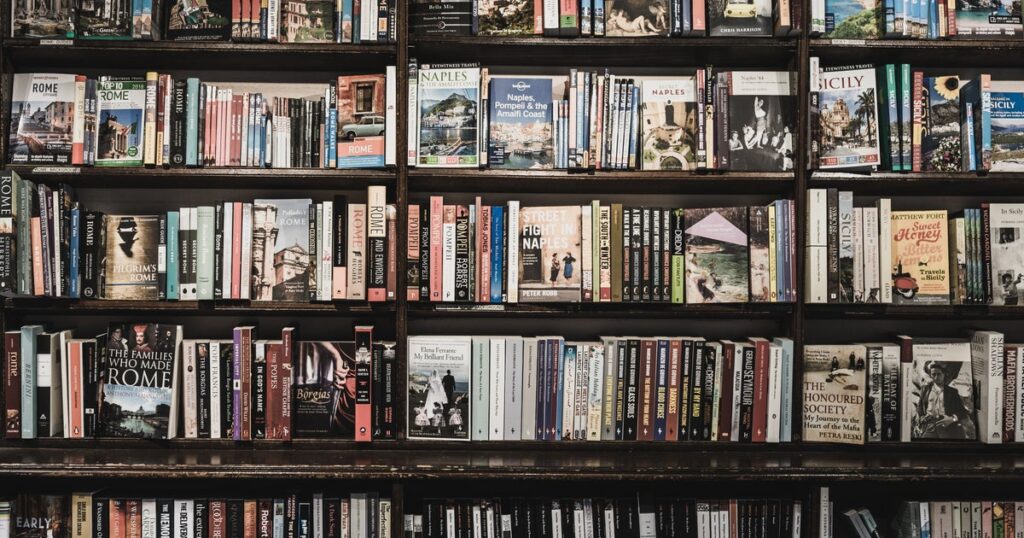Kindle VS Paperback: Which one is better?

[ad_1]
The opinions expressed in this article are the writer’s own and do not reflect the views of Her Campus.
This article is written by a student writer from the Her Campus at Casper Libero chapter.
Kindle or paperback, that is the question. In case you’ve been WAY too deep in your library and don’t know what on earth a Kindle is: it is an e-reader (a device that allows you to read electronic books on it) by Amazon. Generally, e-readers have a similar look to tablets, with a touchscreen – sometimes buttons – and usually come in sizes that allow them to fit in the palm of your hand.
Now, mind you, e-readers are not at all the same as tablets. The key difference is how tiering they are for your eyes. While tablets can make your eyesight quite sore after just a short period of time, e-readers are designed to keep you comfortable for longer. Also, their function is limited to reading e-books, and sometimes, depending on the model, PDF files.
On the other side of this debate, we have our old friends: paperback books. And let’s be honest, they have been fulfilling their duties beautifully for centuries.
Which begs the question: Kindle or physical book?
THE WONDER OF KINDLE
As it will become clearer later on, I’m a “regular” bookstan. However, one thing I can appreciate about, not only Kindle, but pretty much all e-readers, is the humongous amount of books and PDF files it allows you to read in a single device.
To give you a basic idea of just how many books we are talking about: in its most basic models, Kindles have somewhere around 6 GB for storage (the other 2 GB are used by the system). And with only that much it is able to keep, on average, 2460 books. Imagine the real estate necessary to store the same number of paperbacks. It really is a wonder that the Kindle manages to do just that in a way that fits on the palm of your hand.
Speaking of that, another big argument in favor of e-readers is their portability. If you carry books with you wherever you go, doing that with a Kindle instead means you take many more books with a lot less weight. And that also means it’s more practical to read bigger titles – think War and Peace, or Les Miserables. And not only that but thanks to its brightness and font adjustment features, it is extra convenient to use e-readers anywhere. Pretty handy, right?
Along the lines of “handiness”, with an internet connection, Kindles can take you around the world (quite literally). Inside the device itself, you can purchase books in a multitude of different languages from countless countries. What helps a great deal are the dictionaries that you can download and refer to while reading, and not only for foreign languages.
And even for those who like to highlight and write notes on the pages, Kindle has got you covered! It provides all the tools you need to make the e-book you own, with the slight disadvantage that the screen only shows black and white. But if you can get past that, it is a wonderful tool to personalize your book on the go.
Another favorable aspect of e-readers is how affordable e-books are. Compared to “regular” books they are much cheaper and, if you are lucky, you can even get them for free. Not to mention you can buy them digitally from the comfort of your home and start reading right away. That being said, it’s important to keep in mind that buying a kindle can get quite expensive and might not be worth it for some people.
But let’s get into that because I’ve had enough of e-reader praising…
THE RELIABILITY OF A PAPERBACK
The main reason why I’m a stan of regular books is the experience they provide, and I know that sounds cliché, but bear with me.
Picking up a book is not only about the words written there, it involves graphic design, the paper’s texture, the weight of the sheets and so much more. All that adds to the story being told and provides cohesion to the work. To phrase it differently: one thing is reading about an adventure on a flat black and white screen, and another completely different thing is reading about it in a book with yellowish pages and a cover that looks like it came out of Indiana Jones’ bag. You get what I mean, right?
Also, books carry with them a sense of collecting, of building your own library. And, if you are especially fond of the literature world, that is a huge appeal. Personally, I really enjoy looking over all the books I’ve collected over the years, seeing how my interests have changed and planning different ways of displaying them on the shelves.
Aesthetics aside, we can safely say that physical books are lower in maintenance than e-readers since they don’t require charging and don’t rely on an internet connection. Not to mention the learning curve of getting the hang of operating the whole thing.
Regular books are intuitive. You open one up, flip through the pages, and there you go: a story on display. With e-readers, you need to get used to the e process of downloading a book, the controls for turning pages, highlighting, organizing files, etc. Not everyone is up to this challenge and would much rather just pick up a good old paperback.
JUST ONE LAST THING
If you would kindly allow me a few more moments on my soapbox, I would like to finish off this rant by saying that even though I get why Kindles catch the eye of many readers, I wouldn’t trade them for my paperbacks for the world. From providing us with a full sensorial experience to becoming dear memories, regular books aren’t going anywhere soon – at least not in my personal library.
—————————————————————–
The article above was edited by Isa Mucilo.
Liked this type of content? Check Her Campus Cásper Líbero home page for more!
[ad_2]




